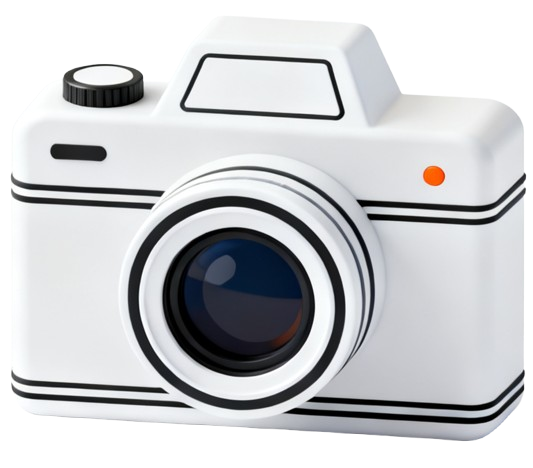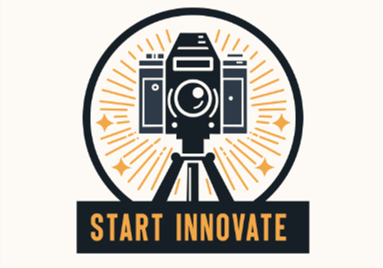Professional Course Introduction
I. Course Positioning

This photography course is a systematic practical course designed for photography enthusiasts with zero foundation and practitioners who hope to enhance their professional skills. It follows the "theory + hands - on practice + review" model, covering the entire process from camera operation to post - processing. This helps students quickly master the core photography skills and transform from "taking pictures" to "creating works".
II. Target Audience
- Novice photographers with zero foundation who want to systematically learn photography knowledge and get rid of their dependence on the "auto mode".
- Enthusiasts who like to record life and travel, and hope to improve the texture and expressiveness of their photos.
- Self - media creators and e - commerce practitioners who need to enhance the competitiveness of their accounts or products through high - quality photography content.
- Beginners who are preparing to engage in photography - related work (such as wedding photography, commercial photography) and need to lay a solid foundation.
III. Core Course Modules (8 units, 40 class hours in total)
- Introduction to Basic Photography (6 class hours)
- Analysis of core camera parameters: The principles and matching techniques of aperture, shutter speed, and ISO.
- Practical application of the three elements of exposure: Exposure compensation and accurate metering methods in different scenarios.
- Selection of focusing modes: The application of single - point focusing and continuous focusing in static/dynamic shooting.
- White balance and color: Restoring true colors and creating personalized color styles.
- Composition and Art of Light and Shadow (8 class hours)
- Classic composition rules: Practical training in the rule of thirds, leading lines, frame - based composition, symmetrical composition, etc.
- Skills of using light and shadow: The shooting logic of front - light, back - light, and side - light, and the utilization of light during the golden hour.
- Creation of picture layering: The combination of foreground, middle ground, and background to enhance the depth of the picture.
- Theme - based composition design: Customizing composition plans according to the shooting subjects (portraits/scenery/still - life).
- Practical Shooting by Category (12 class hours)
- Portrait photography: Guiding poses, arranging lighting, and choosing backgrounds to create natural and vivid portraits.
- Landscape photography: Selecting scenery for landscape themes, using wide - angle/telephoto lenses, and shooting dynamic landscapes (flowing water/cloud seas).
- Still - life and product photography: Lighting techniques, background matching, and presenting details to meet e - commerce or creative needs.
- Street and documentary photography: ,capturing human - interest scenes, and constructing story - telling pictures.
- Core of Post - processing (8 class hours)
- Basic post - processing tools: The interface operation of Lightroom/Photoshop and the batch color - adjustment process.
- Optimization of light, shadow, and color: Exposure correction, contrast adjustment, and the use of levels/curves.
- Blemish repair and detail enhancement: Natural methods of skin retouching, noise reduction, and sharpening.
- Stylized color - adjustment: Tutorials for creating popular color tones such as film - style, Instagram - style, and retro - style.
- Equipment Selection and Maintenance (3 class hours)
- Guide to camera and lens selection: Choosing DSLR/mirrorless cameras according to needs, and matching fixed - focal - length/zoom lenses to different scenarios.
- Use of auxiliary equipment: The correct operation and matching of tripods, flashlights, and filters.
- Daily camera maintenance: Cleaning techniques, moisture - proof maintenance, and troubleshooting of common faults.
- Practical Creation and Review (3 class hours)
- Theme - based shooting tasks: One practical topic per week (such as "urban night view", "indoor portrait"), and students submit their works.
- One - on - one work review: Instructors point out problems and provide optimization plans.
- Analysis of excellent works: Analyzing industry cases and extracting reusable shooting ideas.
IV. Teaching Features
- Systematic system: Progressing step by step from basic to advanced levels, avoiding fragmented learning.
- Practice - oriented: 70% of the class hours are for hands - on training, accompanied by after - class assignments to reinforce skills.
- Professional teaching staff: Instructors have more than 10 years of photography experience and are good at combining commercial photography with teaching.
- Flexible learning: Providing course recordings for playback (valid for 1 year), supporting learning in fragmented time.
- Supplementary resources: Gifted with exclusive photography parameter manuals, post - processing preset packages, and access to the material library.
V. Learning Outcomes
After completing the course, students can independently complete:
- Professional - level shooting in various scenarios (portraits, landscapes, still - life, etc.).
- Independent post - processing and stylized creation.
- Formulating personalized shooting plans to meet personal creative or commercial needs.
- Building a personal photography portfolio to enhance industry competitiveness.
Leave your contact information and we will reply to you as soon as possible
